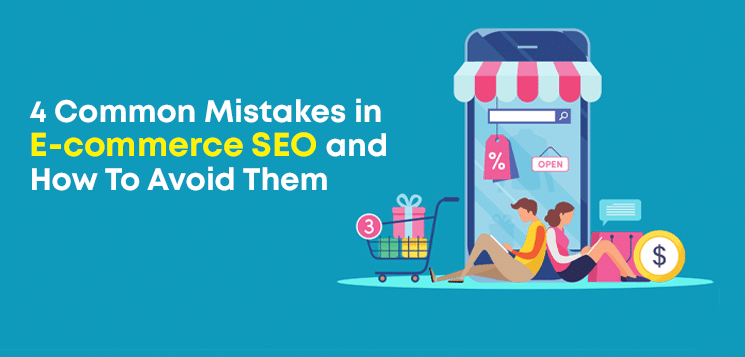1. What Are Hreflang Tags?
Hreflang tags, short for Hypertext Reference Language tags, are HTML attributes used to specify the language and regional targeting of a webpage. These tags are particularly relevant for multilingual and multiregional websites, allowing search engines to serve the most relevant content to users based on their language and location preferences.
Hreflang tags are typically placed within the HTML head section of a webpage and look like this:
<link rel="alternate" hreflang="en-US" href="https://example.com/en-us/page">
In this example, “en-US” represents the language and region code for English spoken in the United States. The “href” attribute points to the corresponding page for that language and region. By implementing Hreflang tags correctly, e-commerce websites can ensure that their international audience receives content that suits their preferences, leading to improved user experience and SEO rankings.
2. Why Are Hreflang Tags Important for E-commerce SEO?
Effective utilization of Hreflang tags can significantly impact your e-commerce SEO strategy in the following ways:
- Improved User Experience: Hreflang tags ensure that users are directed to the content in their preferred language and region, enhancing user experience and reducing bounce rates.
- Better SEO Rankings: Search engines like Google prioritize websites that provide content tailored to a user’s language and location. Implementing Hreflang tags correctly can lead to higher search engine rankings, which are critical for e-commerce success.
- Global Expansion: E-commerce businesses often target international markets. Hreflang tags enable you to cater to diverse audiences efficiently, making it easier to expand your global reach.
- Reduced Duplicate Content Issues: Without Hreflang tags, search engines might interpret multiple language versions of a page as duplicate content. This can lead to penalization in search results. Hreflang tags help mitigate this issue by specifying the intended audience for each page.
3. Best Practices for Implementing Hreflang Tags
To reap the full benefits of Hreflang tags for your e-commerce SEO, it’s crucial to follow these best practices:
3.1. Proper Language and Region Codes
- Utilize standardized language and region codes. For example, use “en-US” for English in the United States or “fr-FR” for French in France. Refer to the IANA Language Subtag Registry for a comprehensive list of codes.
3.2. Consistent Use of Hreflang Tags
- Ensure consistency across your site. Each page with alternate language versions should have the corresponding Hreflang tags, including the self-referential tag.
3.3. Implementing Hreflang Tags in HTML Header
- Place Hreflang tags in the HTML head section of your webpages to make them easily accessible to search engines.
3.4. Use of Self-Referential Hreflang Tags
- Always include a self-referential Hreflang tag on each page to specify the default language and region. This ensures that search engines understand the page’s intended audience.
3.5. Geotargeting in Google Search Console
- Use Google Search Console to geotarget your site to specific countries. This helps search engines identify your target audience more accurately.
3.6. Sitemaps for Multilingual and Multiregional Sites
- Create separate sitemaps for each language or region to help search engines index your content correctly. Submit these sitemaps to Google Search Console.
3.7. Regularly Monitor and Update Hreflang Tags
- Periodically review and update Hreflang tags to ensure they reflect any changes in your website’s content, language availability, or regional targeting.
4. Common Mistakes to Avoid
To make the most of Hreflang tags for your e-commerce SEO, it’s crucial to avoid common mistakes that can negatively impact your website’s search engine rankings and user experience.
Here are four mistakes to steer clear of:
4.1. Mismatched Hreflang Tags
- One of the most significant errors is using Hreflang tags that do not match the actual content of the page. Make sure that the language and region codes in the tags correspond to the content of the page.
4.2. Using Hreflang Tags Unnecessarily
- Avoid using Hreflang tags when they are not required. Only employ them when you have multiple language or regional versions of a page. Unnecessary Hreflang tags can confuse search engines.
4.3. Ignoring Canonical Tags
- Canonical tags should be used in conjunction with Hreflang tags to specify the preferred version of a page. Neglecting canonical tags can result in ranking and indexing issues.
4.4. Neglecting Mobile Optimization
- With an increasing number of users accessing e-commerce sites on mobile devices, it’s essential to ensure that your Hreflang tags are appropriately implemented on mobile versions of your site. Failing to do so can lead to user experience issues and lower rankings.
Hreflang tags are a powerful tool for e-commerce businesses looking to expand their reach and provide a tailored user experience for international audiences. When employed correctly, these tags can significantly enhance your website’s SEO rankings, reduce duplicate content issues, and improve user satisfaction. By adhering to the best practices and avoiding common mistakes outlined in this guide, you can harness the full potential of Hreflang tags to boost your e-commerce SEO and ultimately drive more conversions and revenue for your online store.
Remember that SEO is an ongoing process, and regularly monitoring and optimizing your Hreflang tags is essential to maintain and improve your e-commerce site’s performance in the ever-evolving world of online retail.
References :
[1] Google Webmasters – Use Hreflang for language and regional URLs
[2] Google Search Console





